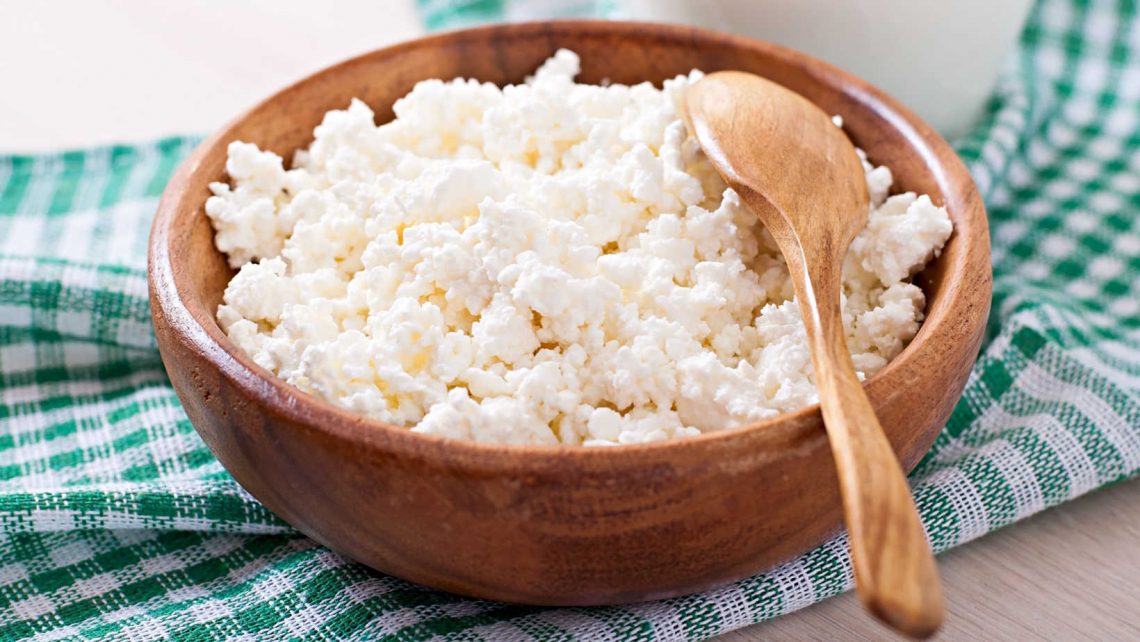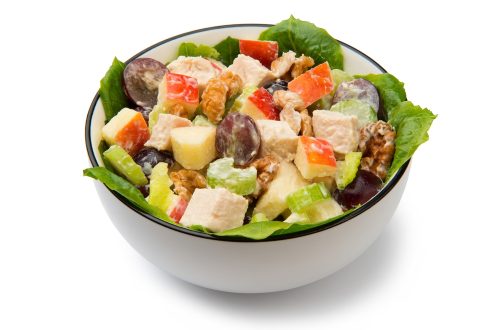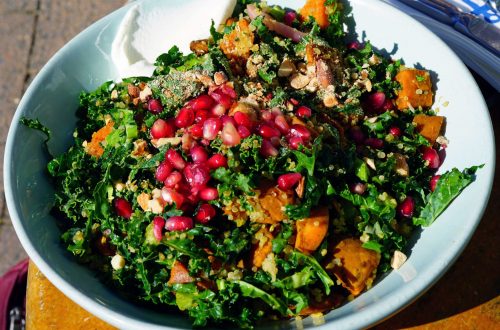
Looking for a High-Protein, Low-Cal, Low-Fat Ingredient?
It’s springtime at last. And I’m thinking about lighter meals and ways to use the fresh vegetables of the season. I’m also continuing to think about how to follow my own advice and lower my meat consumption. In my house, that doesn’t mean meat substitutes; we really don’t eat tofu or veggie burgers. What about cheese for protein? For that matter, what about cottage cheese, which is high in protein and low in both fat and cholesterol?
A Midwest staple
These days, good old cottage cheese may be on the brink of making a comeback for that reason. I have a long history with this mild-flavored curdled-milk cheese, which was frequently on the menu when I was growing up. Usually, it was a “salad” item for evening meals – a large dollop of cottage cheese topped with canned fruit, usually peaches or pears, sometimes topped with a maraschino cherry for a special treat. For larger gatherings, a popular offering was lime Jell-O incorporating cottage cheese, crushed pineapple, and miniature marshmallows, a dish my grandmother memorialized as Faye Gill’s Salad. I don’t know who Faye Gill was, but her concoction is legendary.
Cottage cheese could also be found in farm-country casseroles: my local hometown church cookbook includes hamburger noodle, broccoli, and lasagna casseroles. The Farm Journal Country Cookbook of that era also showcased a main-dish salmon loaf incorporating a cottage cheese layer and a salmon layer, molded together with unflavored gelatin. At a time when Midwest stores did not stock a wide range of choices, this ubiquitous key ingredient often produced locally was a perfect substitute for soft white cheeses (ricotta, fromage blanc, mascarpone); yogurt; sour cream; cream cheese; and even whipped heavy cream.
Simple cheeses were probably first made around 5,000 B.C. in the Middle East. What we know as “cottage cheese” probably originated in the 19th century in the U.S. The Oxford Companion to Food says that it first appeared in a dictionary as “smear-case” (likely a reference to the Pennsylvania Dutch term smierkase). Farm families who kept cows for milk and cream made their own fresh unripened cheese – cottage cheese.
Contemporary recipes
Lately, I’ve seen more recipes containing cottage cheese, especially baked goods – blintzes, cheesecakes, tortes, and cheese pies along with casseroles and salads. Many of these main dish recipes are simple and quick to put together, and you can often use what’s in the pantry, fridge, and vegetable drawer.
Helen’s Organic Pick and Mix Dinner is a good example. You take your choice of carbs, spices, protein (this is where cottage cheese comes in), greens, herbs, feta cheese, sautéed aromatics, and splashes of oil and acid. I’d sauté an onion and a little garlic along with chopped bacon and chopped vegetables. Then throw in a generous amount of cottage cheese, spinach, and chopped fresh oregano, and dress it all in a vinaigrette of olive oil and lemon juice, dusted with feta cheese.
Or you could try the simple chipped beef and cheese from Craig Claiborne. It’s a casserole that incorporates noodles, olives, and chipped beef with cottage cheese and cream cheese. Here’s a simple Peruvian Potatoes recipe that involves steaming or boiling potatoes, slicing them in half, and topping them while hot with hard-boiled eggs. Drizzle them with a sauce of sautéed chopped chilies, cottage cheese, cream, and turmeric, and sprinkle on pickled onion slices.
You could also go a little more elaborate with a recipe of chicken breasts stuffed with spinach and cottage cheese. For something a little spicier, consider tandoori-roasted stuffed peppers – peppers stuffed with shredded vegetables, sautéed in a masala-infused oil, mixed with cashews, raisins, and cottage cheese, then baked in a hot oven. Another approach would be a recipe from Crete: butternut squash and potato pie with tomato, mint, and Manchego cheese.
They’re a long way from cottage cheese topped with a canned pear half. But maybe worth trying. What about you? Do you eat cottage cheese these days?
Do have ideas for topics you’d like me to cover? Or comments on this blog? Please click on “Read in Browser” or on the headline to view the blog on the website. You can log in and comment at the end of the blog to share your thoughts and start a discussion.
If you’d like to share the blog, click on the Facebook icon or one of the others. Thanks!





2 Comments
KC Swallow
We’ve been trying substiutes for wheat flour. I made a fabulous ricotta pie with almond flour and chickpea flour for dredging makes better fried calamari that wheat flour! Might be food for a column (pun intended!).
Kristen F
You’ve inspired me! I’ve been making lots of yogurt lately. I’ll try making some cottage cheese soon. I’ll let you know how it turns out!